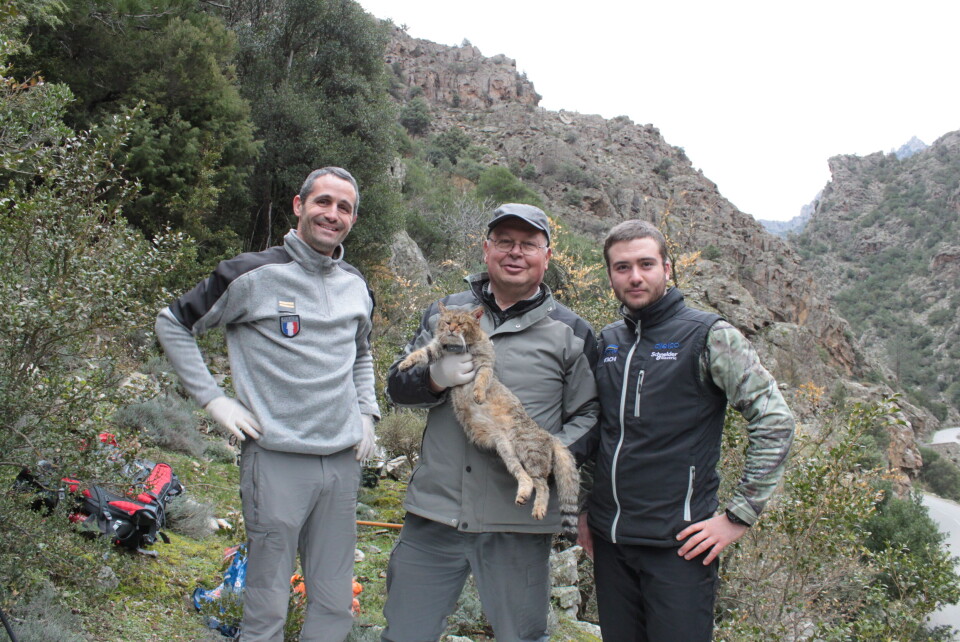-
May will be difficult month for train travel in France, warns minister
Two major train unions are threatening to strike and are ‘not willing to negotiate’, he says
-
Larousse dictionary adds 150 new French words - which ones do you know?
The new words come from trends in sport, nature, leisure, food, medicine, and the rest of the French-speaking world
-
Large increase in Americans buying properties on the Cote d’Azur
President Trump is cited as a major factor, but is not the only reason for the area’s popularity
Legendary Corsican ‘fox-cat’ to be listed as a new species
The Corsican wildcat known as the ghjattu-volpe (fox-cat), is bigger than a domestic cat with distinct markings

Update 23/03/2023: The Corsican wildcat – known as a ‘fox cat’ for its long body and black-tipped tail – is not just local legend but has now been recognised as a specific species, the OFB biodiversity agency has said. After more than a decade of research, scientists discovered the ghjattu-volpe (fox-cat) has a “unique genetic strain” that differs from domestic cats.
Experts hope that research into a Corsican wildcat known as the ghjattu-volpe (fox-cat), long thought to have been just a local legend, will lead to it being deemed a new species.
A push for the classification is being led by official French biodiversity agency OFB, which plans to publish an article setting out key research next year.
The dossier will then be passed to the International Institute for Species Exploration to decide whether the fox-cat should be included in the species list, to which only 10 are added per year out of 18,000 applications.
A small team from the National Office for Hunting and Wildlife (ONCFS), led by Pierre Benedetti, has been studying the animal since 2008.
Mr Benedetti had heard tales since childhood of the fox-cat – a stripey, thick-coated animal that was said to attack sheep and goats in the Corsican hills.
Bigger than a domestic cat, with distinct markings, the fox-cat allegedly stalked herds of cattle and sucked at their teats, according to tales passed down.
No one, apart from local shepherds, had seen the animal until recently
As head of the Corsican natural areas and terrestrial wildlife management unit, Mr Benedetti has devoted himself to tracking them.
He said: “I had heard about this animal since I was a child but we never saw it. There was this mythology surrounding it, but we have captured about 20 over the last 10 years.
“The fox-cat has nothing to do with the fox. It is a cat. In fact, it’s the ancestor of the domestic cat.”
Cages are set in the Ascu hunting and wildlife reserve.
“We are at a site that suits the fox-cat. There are rocks, which means there are shelters, forests, and therefore prey.
“We also have water and we are relatively far from the main areas of human activity. So this territory offers the animals tranquillity.”
Using baits and scents, he has been able to capture a small number of animals which have been anaesthetised to be measured, weighed, and photographed before being set free. “The fox-cat is around 85cm long with the tail. It has well-identified phenotypic marks but it is not the size that differentiates it.
“There is the colour of the coat, the texture, the width of the ears... a lot of elements that differentiate it from a domestic animal.”
Nine fox-cats have been tracked using GPS collars
This has revealed that they can travel great distances and climb to altitudes of up to 2,000m.
Scientists in Lyon and Paris have been helping to understand the animal by studying its genes and its history from bones found at archaeological sites.
“Of course, it’s a job I’m passionate about,” Mr Benedetti said. “Without passion, a job like this is impossible, especially since nobody believed in the fox-cat. But it will only be a true success when it is on the recognised list of wild species.
“We have to finish the analysis of its genome, and once we have clarified and published the characteristics of its phenotype, ie. the external aspect and its genotype, its genetic identity card, we will be able to start the recognition process.”
Related stories
Animal spotted by farmers in Calvados, Normandy confirmed to be a wolf
Wild animals to be banned from shows in France – where will they go?
























